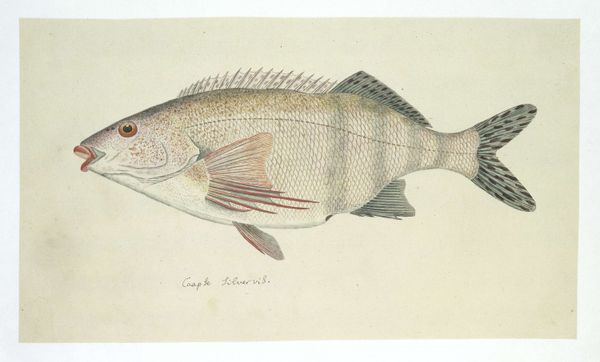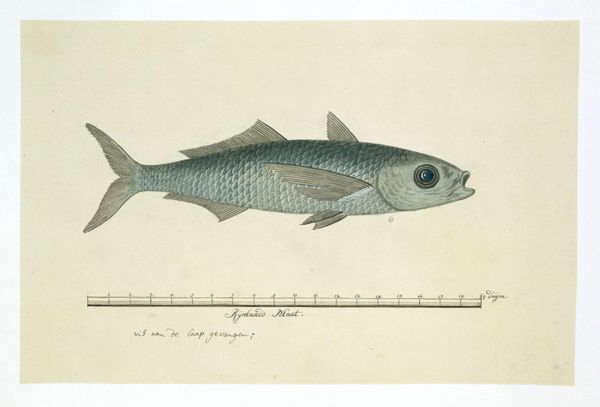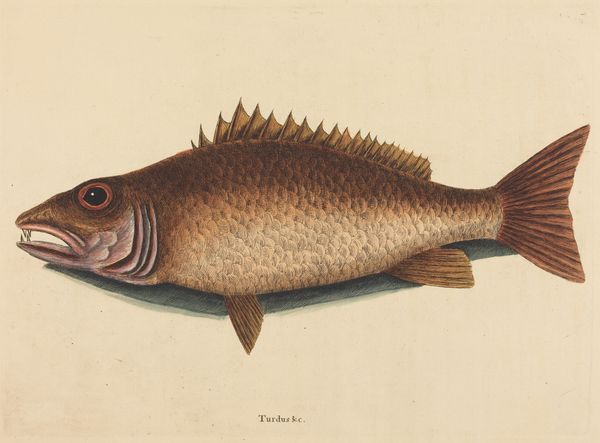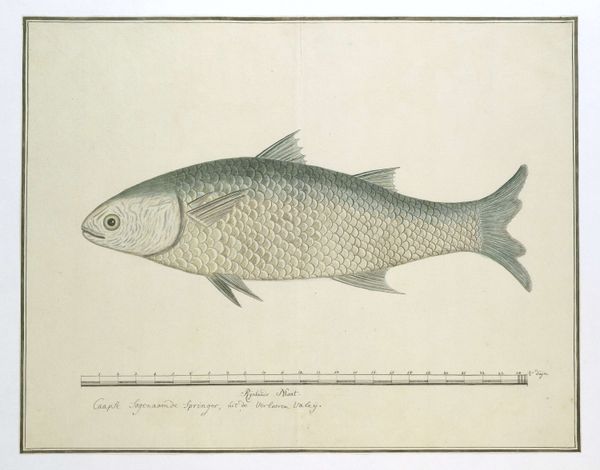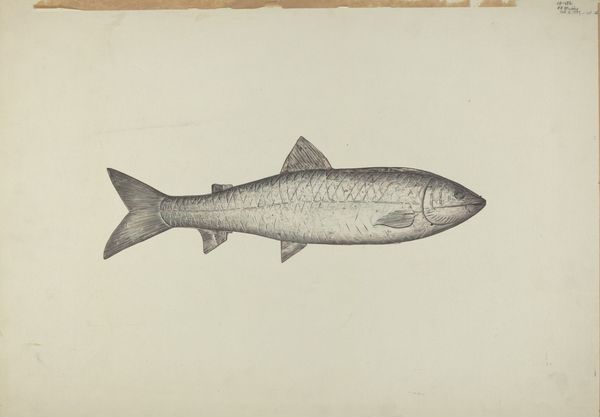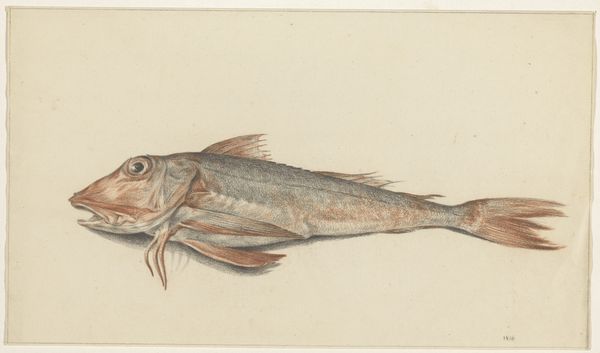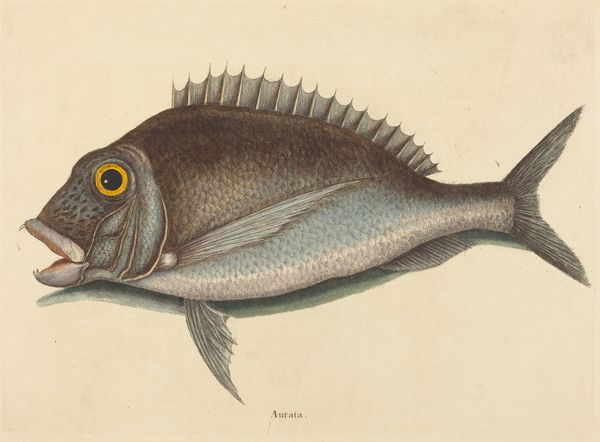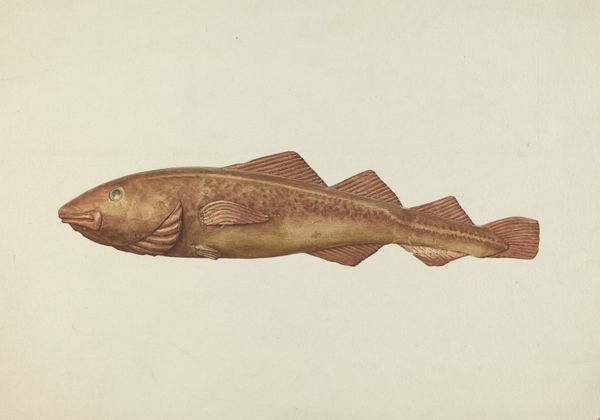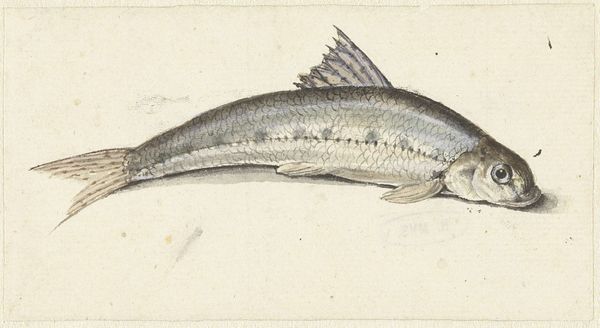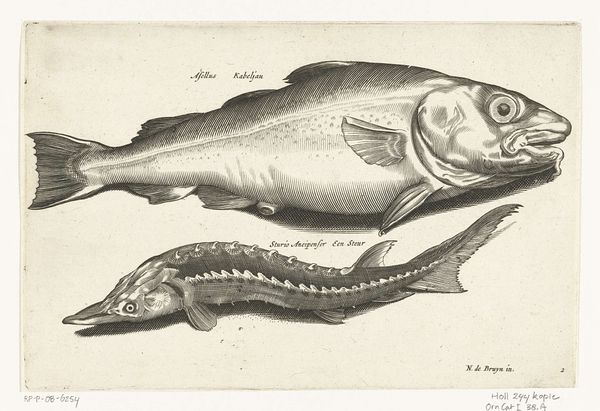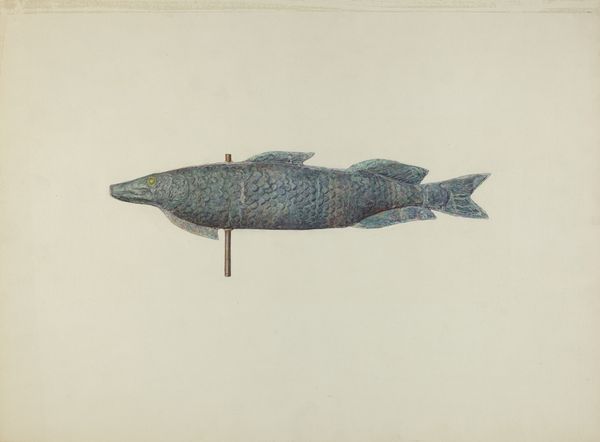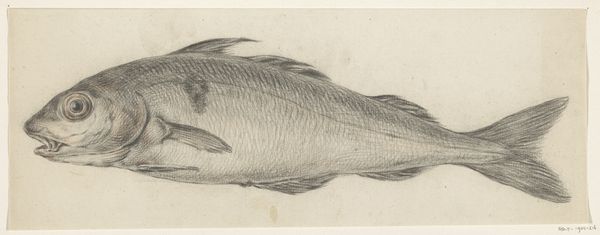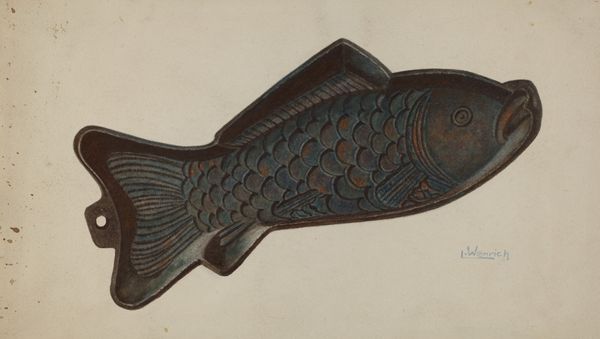
drawing, coloured-pencil, watercolor
#
drawing
#
coloured-pencil
#
pencil sketch
#
watercolor
#
pencil drawing
#
coloured pencil
#
watercolour illustration
#
naturalism
#
watercolor
Dimensions: height 660 mm, width 480 mm, height 334 mm, width 508 mm, height mm, width mm
Copyright: Rijks Museum: Open Domain
Curator: Here we have Robert Jacob Gordon's "Clarias stappersii," or catfish, rendered likely between 1777 and 1786. It's executed in a combination of drawing, colored pencil, and watercolor. What are your first thoughts? Editor: It's surprisingly endearing for a fish! The soft, muted blues and grays give it a gentle, almost melancholic feel. The whiskers add a lot of character. There is also a beautiful use of hatching in its illustration which creates this gorgeous texture. Curator: Gordon was, of course, a military man, but also a keen observer of the natural world during his time in South Africa. These naturalistic drawings were both scientific and documentary. What do you think of the context? Editor: That's a vital point. Considering the legacy of colonialism, these images played a significant role in classifying and documenting, for European audiences, the resources of colonized lands, like this fish in what is now South Africa. Curator: Precisely. This work then becomes more than just a drawing of a catfish, doesn't it? It's about power dynamics and the scientific gaze imposed upon a new land, even, perhaps especially, in the minute details. Editor: Absolutely. And that’s where thinking intersectionally comes into play. We must also consider how the visual representation itself contributes to establishing and reinforcing ways of seeing that continue to have relevance for thinking about issues related to natural resources, power and exploitation. Curator: Gordon's detailed approach invites us to look closely. The catfish isn't merely an object; it's an individual within a larger ecosystem that Gordon, perhaps unconsciously, brings into frame under very specific cultural assumptions. Editor: I agree completely. These documents, while ostensibly scientific, reflect cultural biases. It is so interesting to consider these artifacts, not simply for their depiction of an animal but also to help reveal how that depiction further inscribes ways of seeing into colonial ideology. Curator: It forces us to contend with art's involvement in power structures. Something that started as the careful observation of an animal is still involved in modern social debates about the representation and management of the planet’s finite natural resources. Editor: Exactly. By looking at art through historical and social context, the conversation of Gordon's illustration continues today to raise interesting discussions on identity and the politics of power structures.
Comments
No comments
Be the first to comment and join the conversation on the ultimate creative platform.
